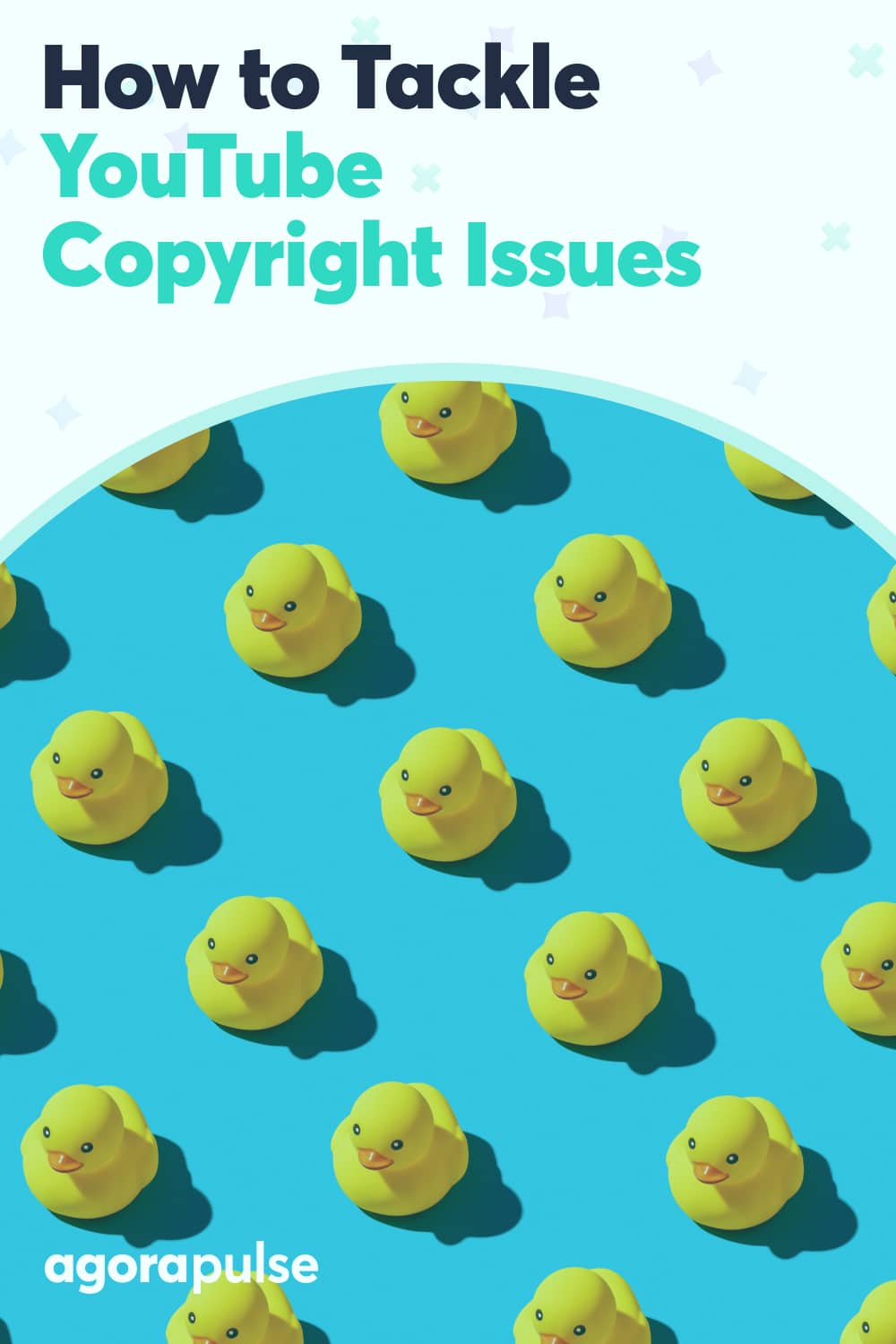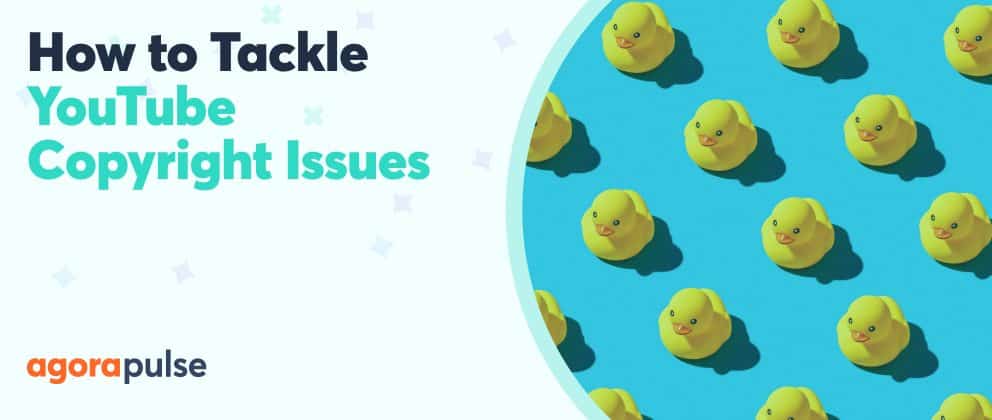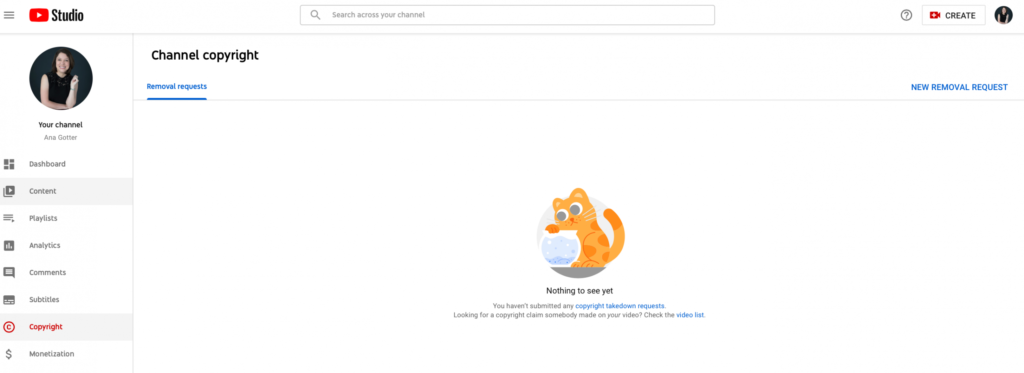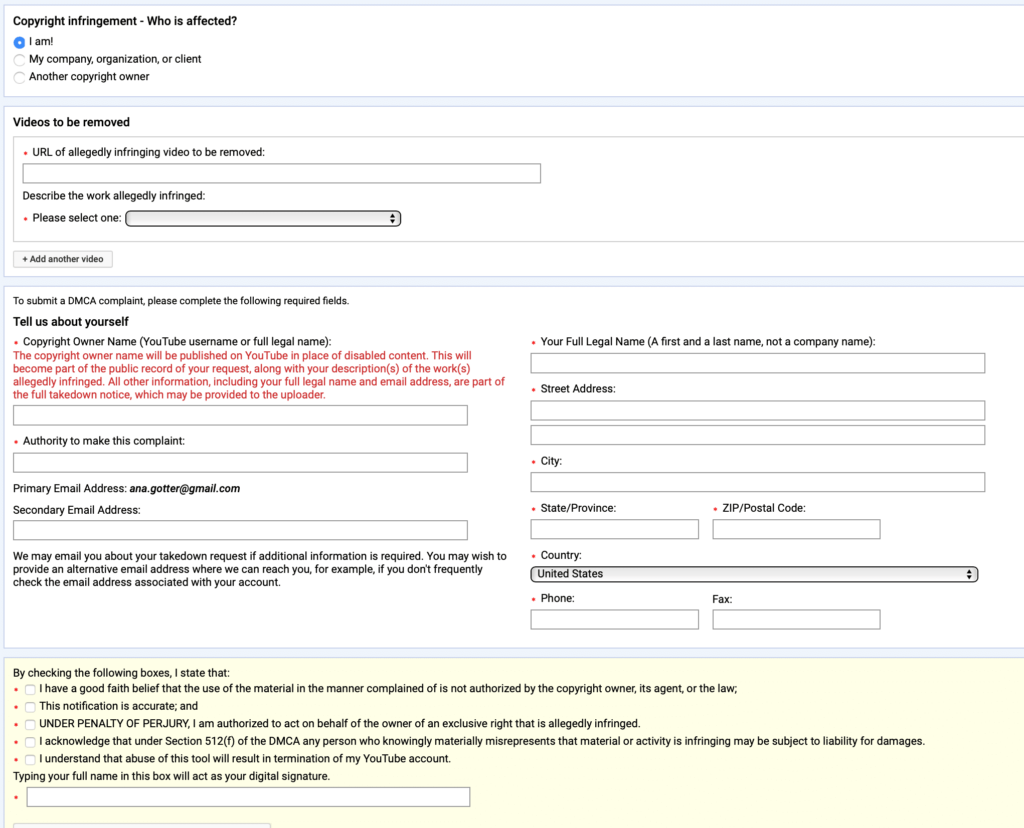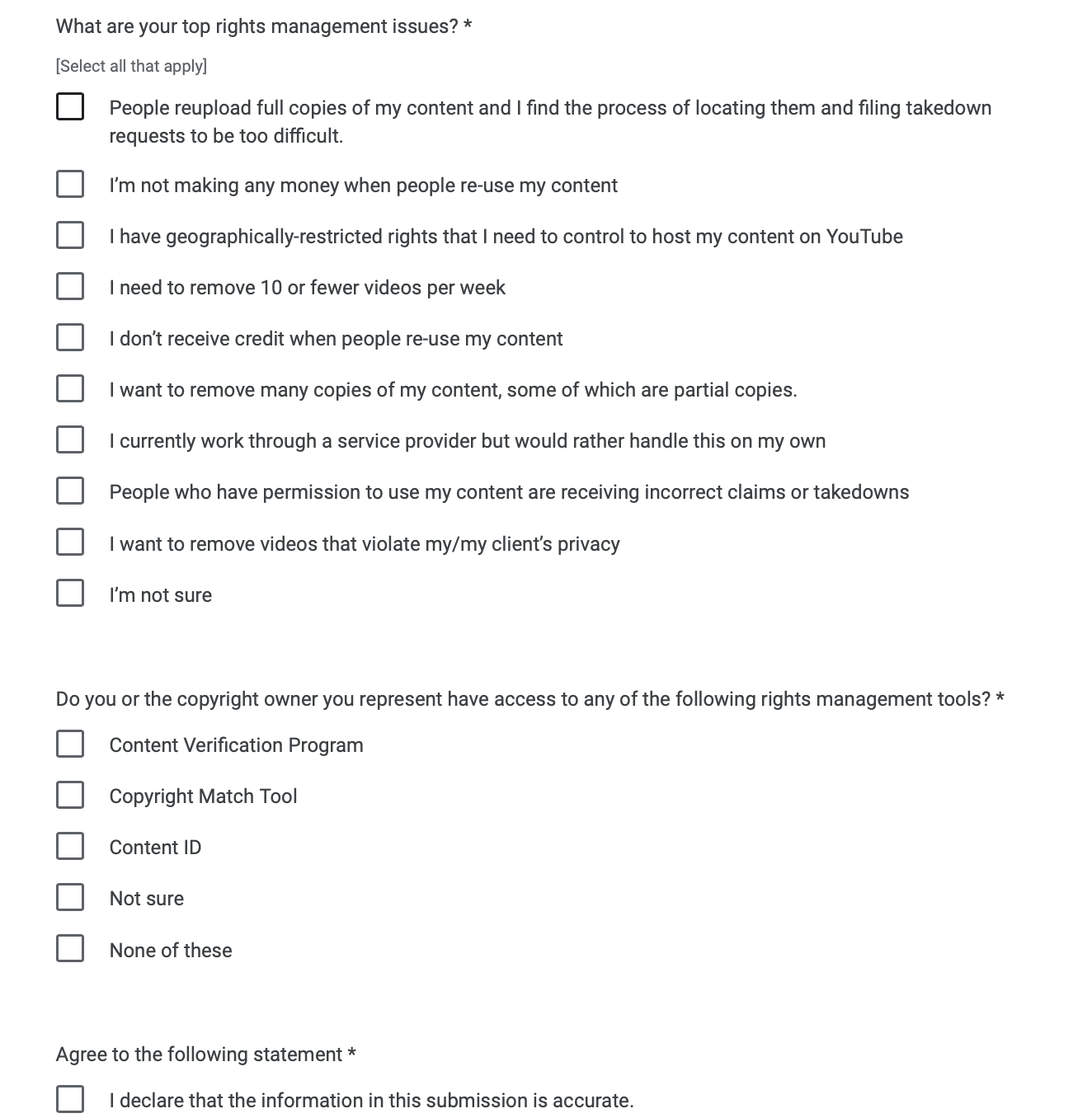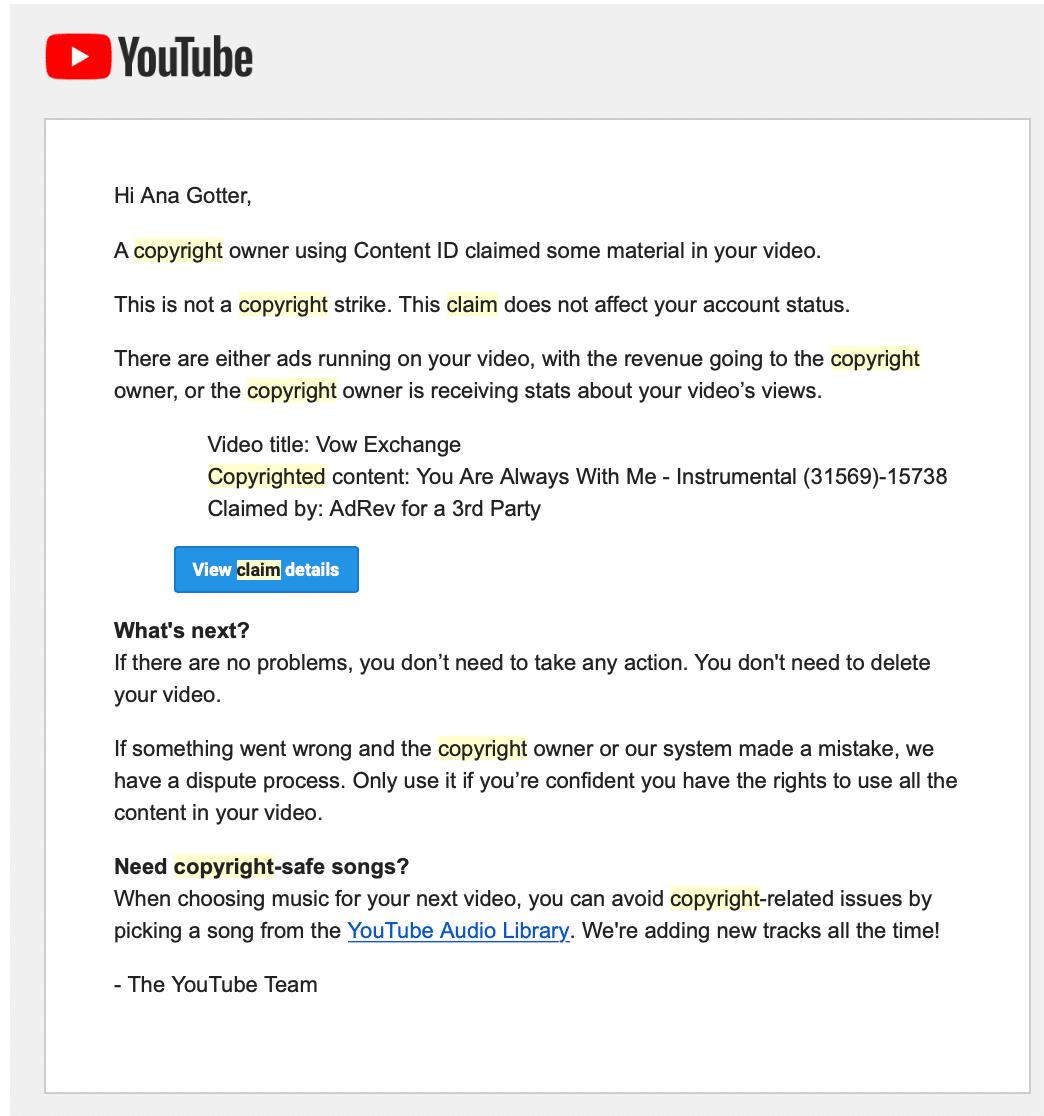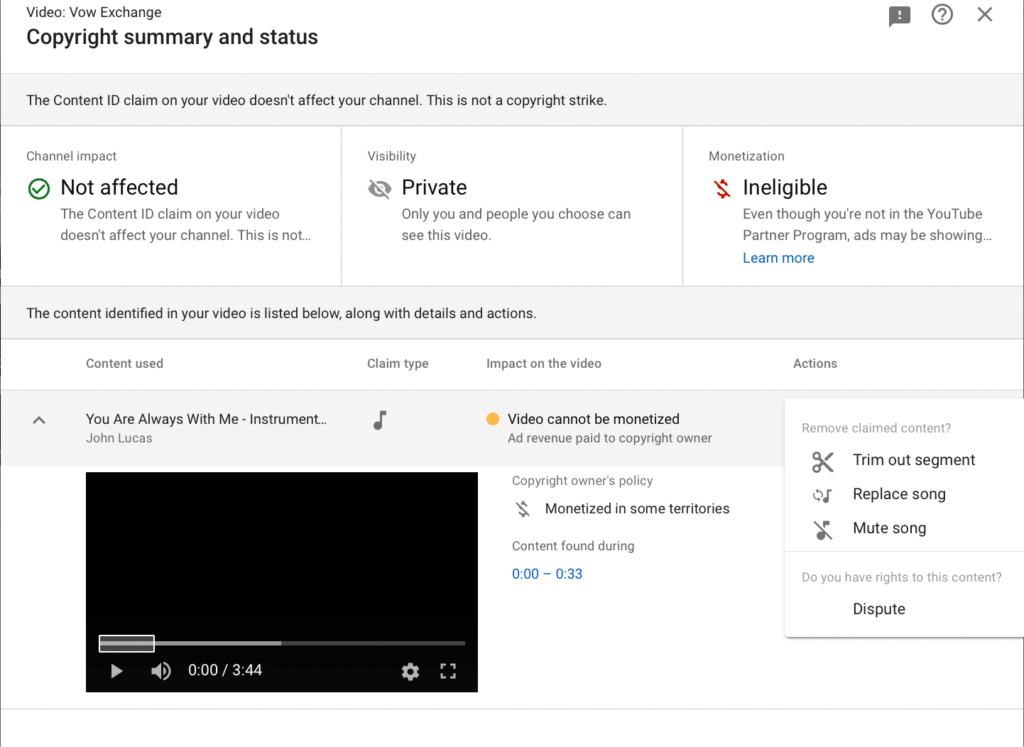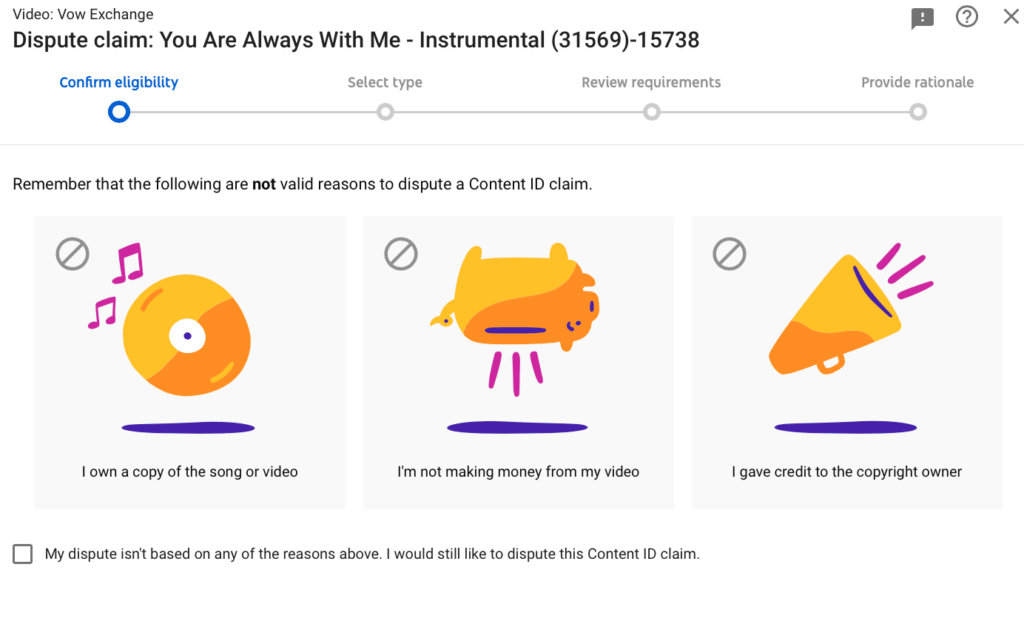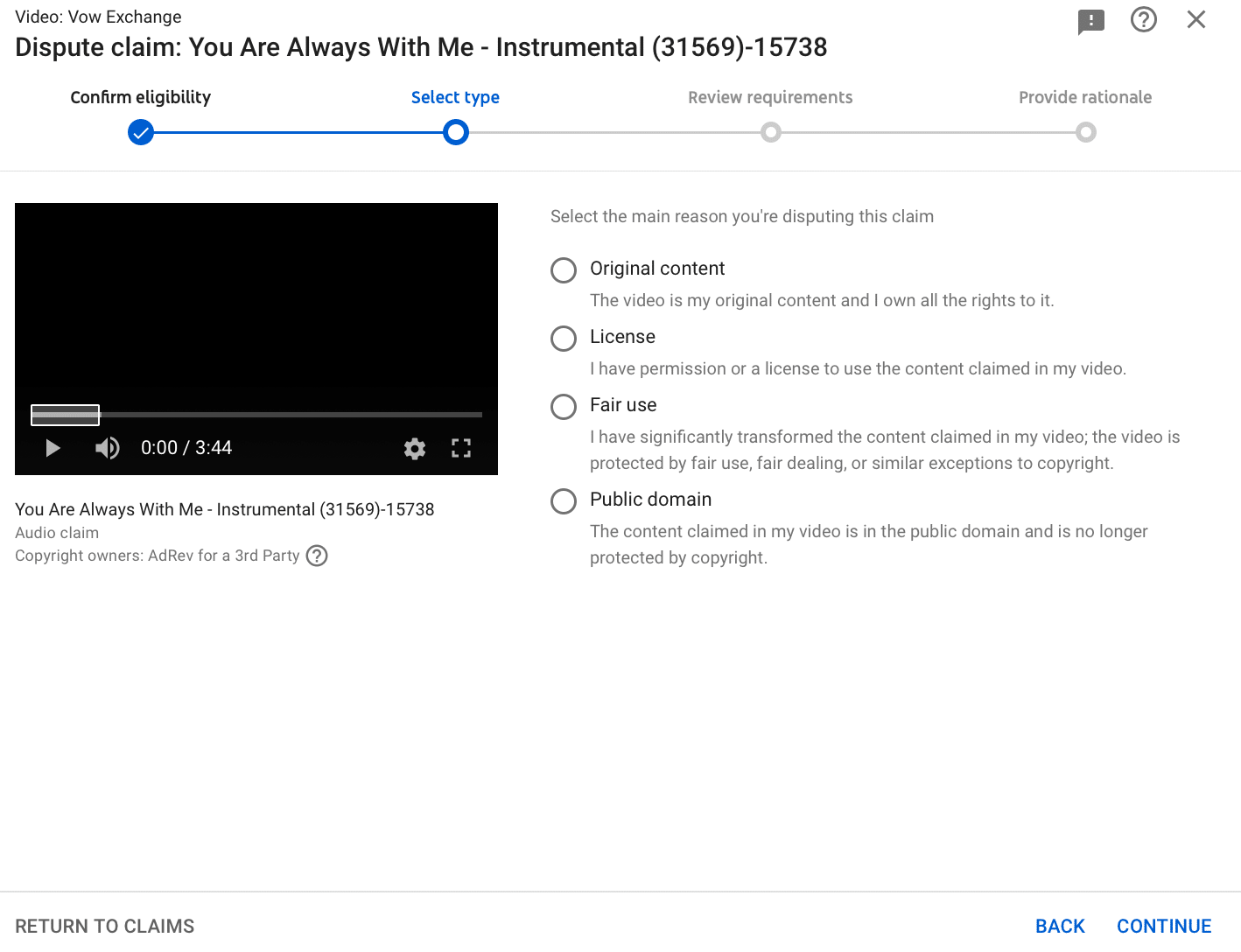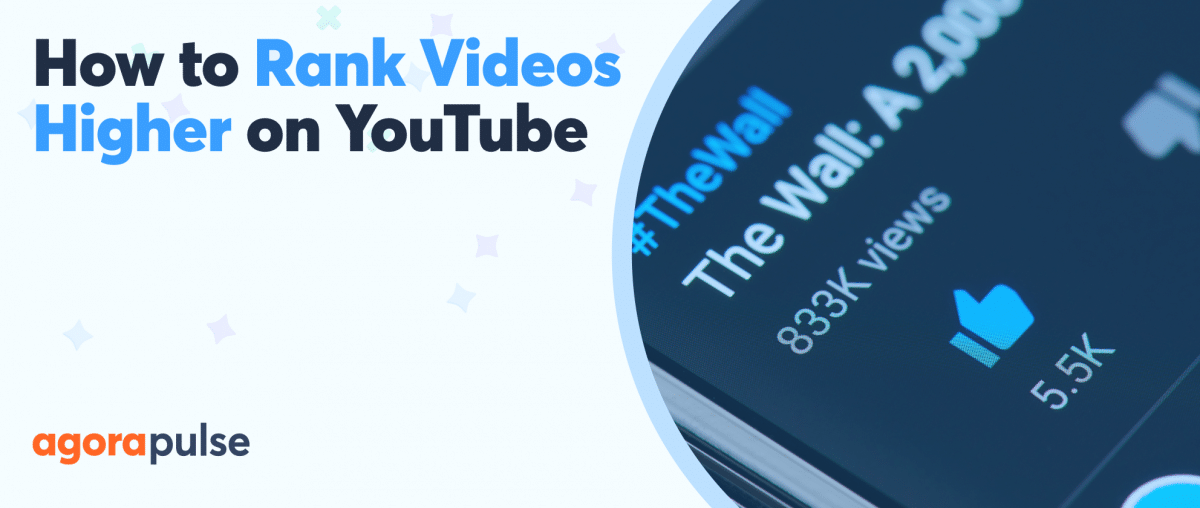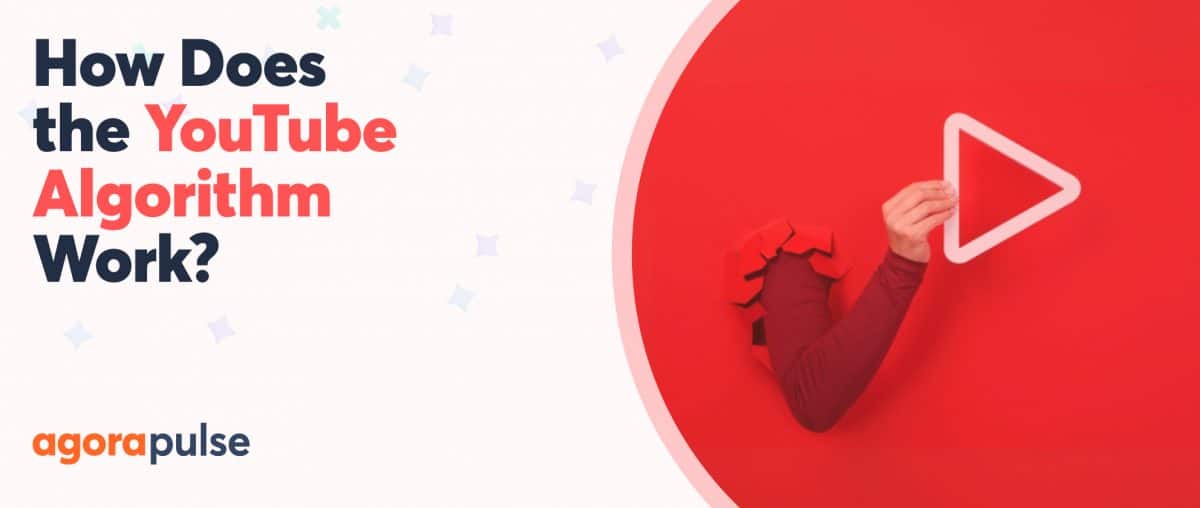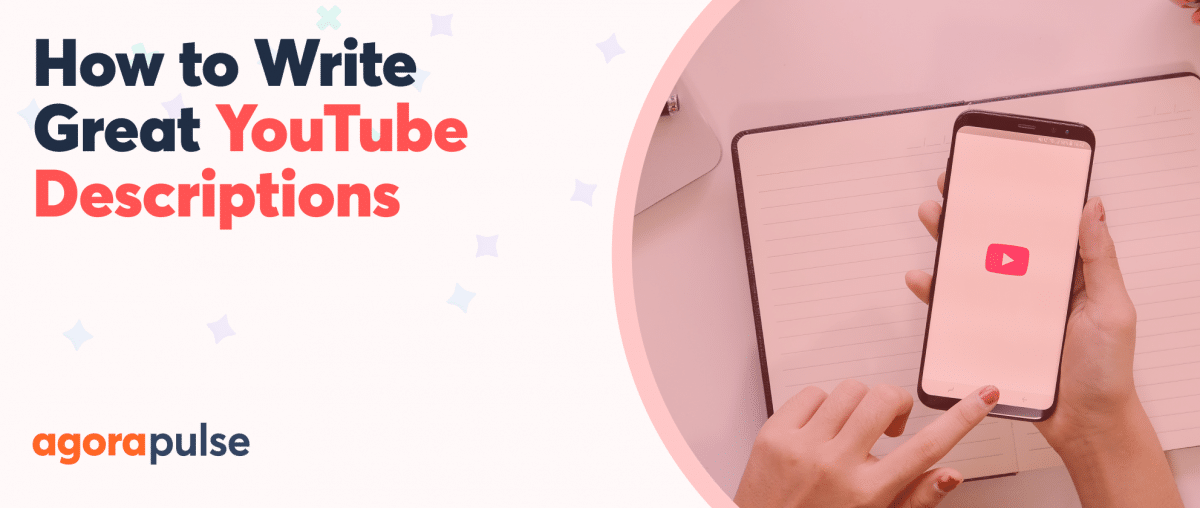hbspt.forms.create({
region: “na1”,
portalId: “8477337”,
formId: “b2b6f8ef-9f85-4b8f-ac2a-f510b34a3c46”,
version: “V2_PRERELEASE”
});
Concerned about YouTube copyright issues? Here’s what you need to know to avoid copyright issues and also protect your content.
Copyright issues are typically a major concern for YouTube creators, who can be on the giving or receiving end of the complaints. It’s an inevitable and unavoidable part of YouTube publishing.
Creators can have their content taken down for copyright violations, even if they make small mistakes that accidentally violate copyright law. They can also use YouTube’s native content ownership tools to have videos from other creators taken down if it’s using their intellectual property.
As a YouTube creator (which includes brands using the platform for marketing!), you may find copyright issues difficult to understand. (They can get so complex!)
So, in this post, we’re going to go over the basics about copyright issues on the platform, including how to protect your content, how to avoid copyright issues, and what counts as a copyright violation.
What Does Copyright Automatically Protect?
Before we dive into the actual copyright tools and processes that you need to know, we need to cover what counts as “protected” under copyright law.
In short, it’s pretty simple:
Any original content including text, audio, and video that you publish online is automatically protected by the DMCA.
That means that when you publish a blog post, you can legally demand that someone who copied it word for word takes it down. If the person doesn’t respond to a cease and desist, you can request that Google take it down.
The same is true with YouTube.
Original content that you publish automatically belongs to you. The exception is if you’ve sold or transferred the rights to someone else. A wedding photographer, for example, might create a wedding video but sign a contract saying that it can’t be published publicly.
You can’t, therefore, pick your favorite Lizzo song, slap it onto your branded video in the background, and expect everything to be smooth sailing.
As a brand, if you haven’t paid for commercial rights or gotten permission to use that track, it can be enough to get your video’s audio removed if a copyright claim is filed against you.
How to File a Copyright Claim as a Creator
When you’re a creator, there’s a solid chance that at some point, someone may try to post content that’s entirely yours.
Television shows, songs, and even hyper-creative content (like the Epic Rap Battles of History) have people who will try to snag content and upload it onto their own channel. In many cases, the goal is to get enough eyes on high-value content people are already looking for that they can monetize it.

You’ll see that someone who isn’t the owner of this show uploaded a full episode online.
Fortunately, YouTube makes it unbelievably easy to file a copyright claim: Go to your YouTube Studio, and then find the “Copyright” section.
Here, you can review all of the existing copyright claim requests you’ve submitted to have others take content down. To make a new request, click on the “New Removal Request” in the top right corner.
YouTube will ask what the issue is, and why you want it taken down.
Once you select copyright or trademark infringement, you’ll select who is impacted. You then share the URL of the allegedly infringing video and the link of the work you’re saying they infringed upon.
You’ll also explain more about yourself, the copyright owner, and why you can make this complaint.
This is a big deal. You don’t want to be throwing these around to try to have someone’s content taken down just because you don’t like the person.
If they’re infringing on your copyright protections, however, you have every right to do so. Google (which owns YouTube) is typically relatively quick. You may see results anywhere from a few days to a little over a month on average.
How to Protect Your Content Proactively
YouTube has an outstanding tool called the “Content ID.” This is only meant for channels and creators with “exclusive rights to a substantial body of original material.”
They can submit their content for protection, and YouTube automatically scans all uploaded videos to this database of files.
You can apply here.
This is how YouTube finds potential copyright issues so quickly, even on private or unlisted videos. (We’ll look at this more in a second.)
What to Do If You’re on the Receiving End of a Copyright Claim
If you end up with a copyright claim, don’t panic– it’s not automatic doom and gloom for your account. There are steps you can take to dispute or rectify it.
Fortunately, I’ve got a great example of what this looks like, and proof of how easy it is to receive one of these claims.
Over the summer, I uploaded our private video from our videographers of our elopement and only invited 10 friends to view it. Within a few days, I received an email saying that there was a copyright claim on part of the content because of YouTube’s automated software.
The email looks like this:
You can also scan all of your content in your video list to see if any have existing copyright claims against them.
You can click on “view claim details” to go right to YouTube to see what the issue is. You’ll see exactly what impact the Content ID claim has on your channel and your video, and what the claim is.
How to tackle copyright claims against you on YouTube
So here, you can see that YouTube automatically flagged the first 33 seconds of the video for a song the videographer put in the background. The person did have permission, but YouTube had no way of knowing that, so monetization is now ineligible on this video.
You’ll also see that under “Actions,” I have four options. I could:
- Trim out the segment
- Replace the song
- Mute the song
- Dispute the rights
When you dispute, YouTube will remind you that just because you own a version of the song as a listener, that you’re not making money, or that you “credited” the copyright owner doesn’t mean the claim isn’t valid.
You can, however, protest that the content is your full original work, that you have a license (which in our case, we did), that you have fair use, or that the content claimed was public domain. You can then review the requirements and provide a rationale. Our video got the okay within two weeks.
Keep in mind that if enough of your videos are found to violate copyright issues, YouTube may take steps anywhere ranging from removing the audio of a video to shutting down your entire channel.
It’s not worth the risk.
How to Avoid Running into YouTube Copyright Claims
If you’re a brand or creator (or a social media manager or digital agency creating on behalf of your clients!), the thought of receiving a copyright content claim is intimidating.
Fortunately, the solutions are relatively simple: Only own visual, audio, and video content that you’re 100% sure you own or have permission to use.
When in doubt, remember that there are free-for-commercial-use songs available or those that offer affordable licenses. There are plenty of places that offer royalty-free music and stock photos that you’re even able to use in marketing videos and ads.
hbspt.forms.create({
region: “na1”,
portalId: “8477337”,
formId: “b2b6f8ef-9f85-4b8f-ac2a-f510b34a3c46”,
version: “V2_PRERELEASE”
});
Final Thoughts
Copyright is exceptional when it’s protecting you. It’s not as fun when you’re on the other side, accidental or otherwise. The good news is that copyright issues on both sides of the aisle are relatively easy to resolve on YouTube. Even better, all of it can happen natively and in-platform.
Being proactive about both protecting your content and avoiding copyright issues, of course, are key. Follow the steps in this post to do both, and enjoy the strategic and creative video marketing process!
Get started on saving time and energy on your own social media management! Check out our free trial of Agorapulse to help you schedule, track, and measure all your social media efforts.
Editor’s note: This blog post is not meant to be taken as legal advice.
